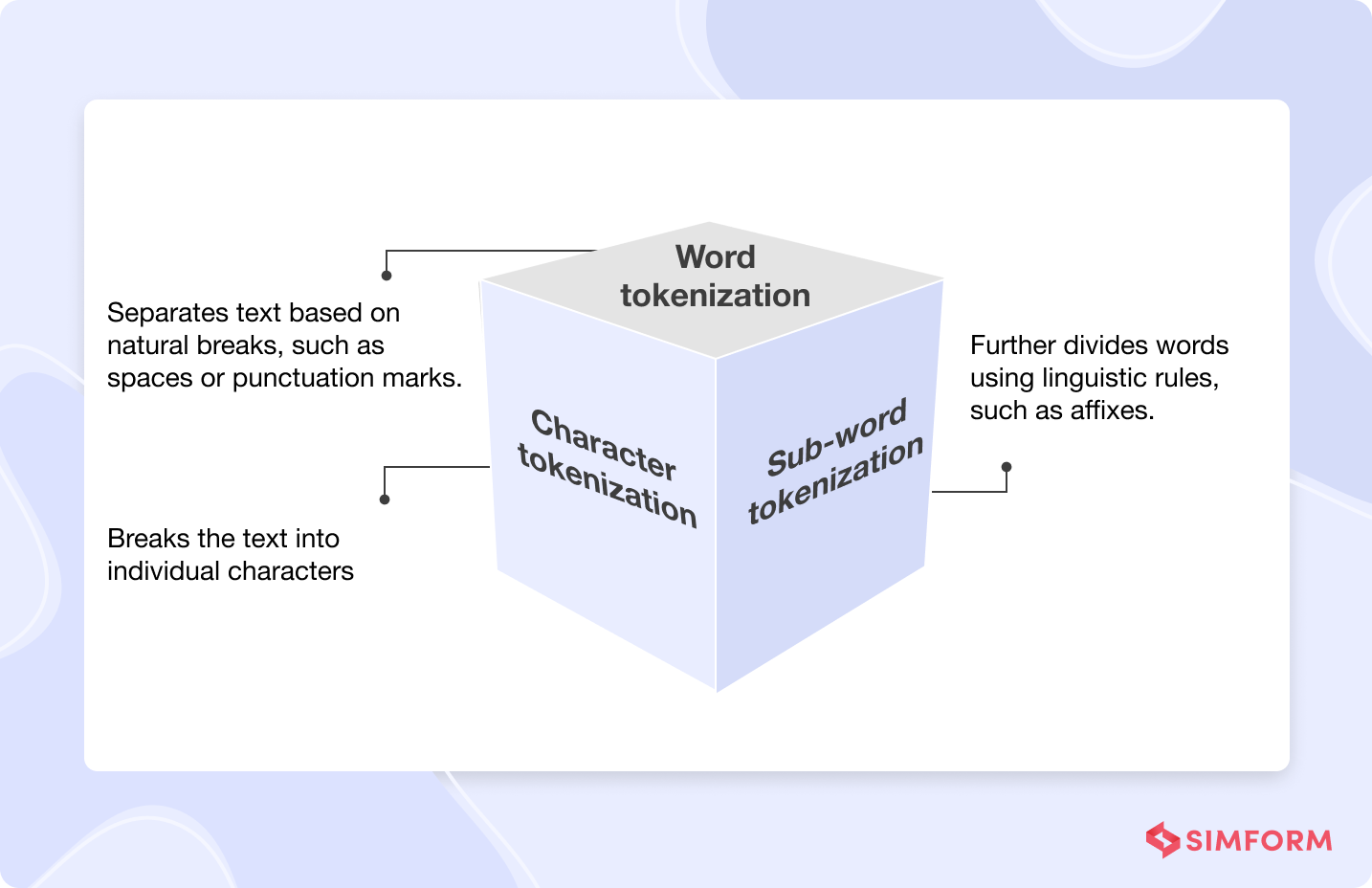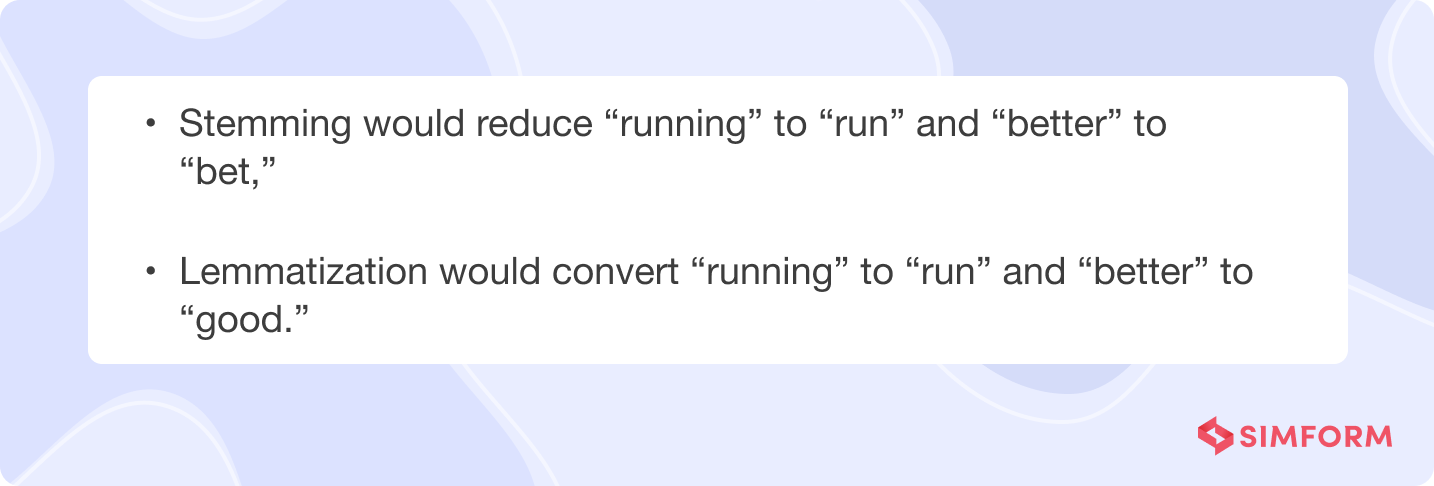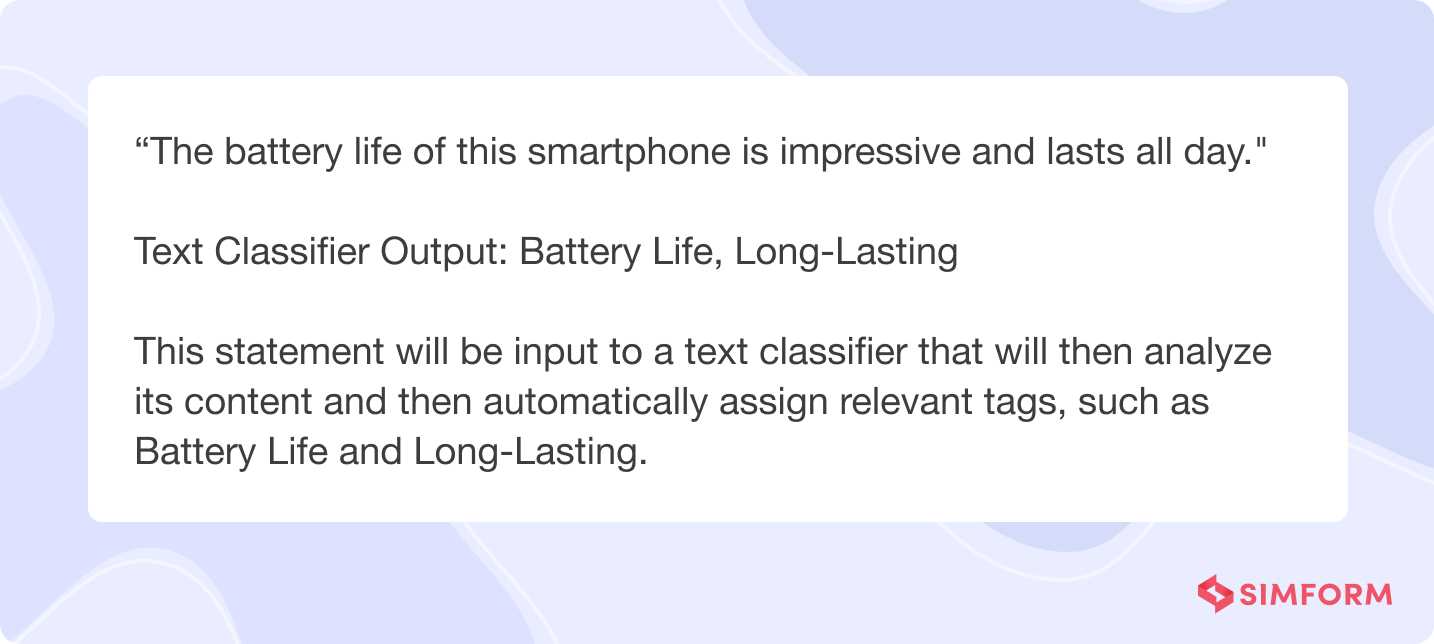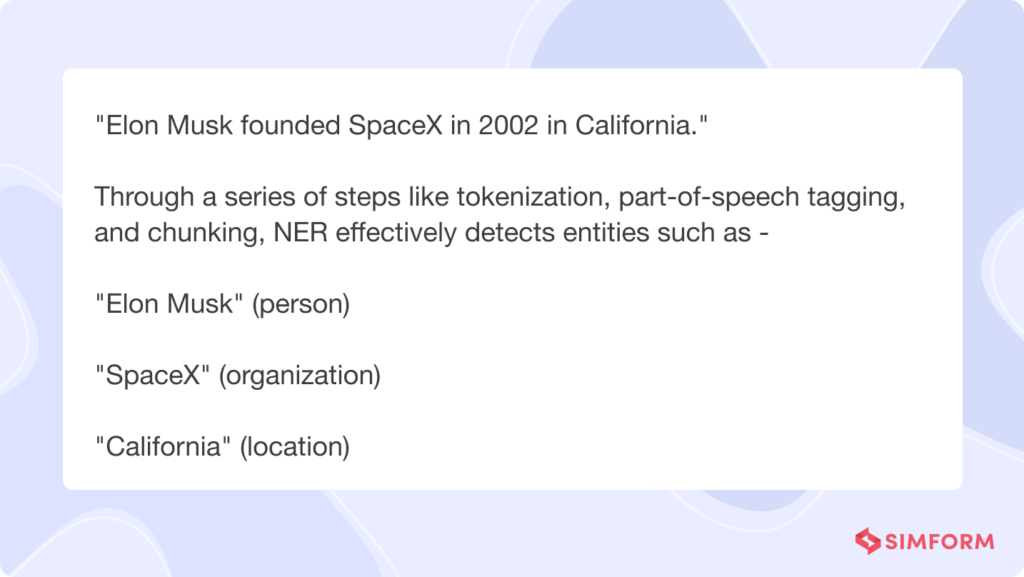“What is the meaning of life?”
“That’s a tough question! The meaning of life can vary from person to person. Some people believe it’s to achieve happiness, others say it’s to make a difference in the world. What do you think?”
Two friends engaged in a philosophical discussion, huh?! Well, by now, you might also have interacted with this conversational genius, linguistic maestro!
ChatGPT’s ability to hold conversations with humans is truly fascinating. At first glance, it seems nothing less than a miraculous feat that a machine can understand and respond to human language in a natural way! However, this capability is actually the result of the powerful combination of artificial intelligence and natural language processing (NLP) techniques.
Not only this, with the help of NLP, organizations can transform unstructured data into a strategic asset. Let’s explore the key NLP techniques that can revolutionize everything from data analysis to customer service and also understand NLP’s applications in various industries.
First we’ll learn what NLP is, without which it would have been impossible for machines to comprehend the nuances and complexities of human language!
What is Natural Language Processing?
Imagine a software developer working on a project that involves analyzing customer feedback and helping the management make some informed decisions. Would it be possible for them to manually go through the massive amount of data consisting of reviews, comments, and feedback?! Now that would certainly be a daunting task, making it challenging to come to meaningful conclusions.
However, with the advent of Natural Language Processing, developers can now automate the process of analyzing large amounts of customer feedback and gain a better perspective on customer sentiments, preferences, and concerns.
NLP is a field of computer science that falls under artificial intelligence, and it gives computers the ability to understand human language in the form of text or speech. This is done using computational linguistics, statistical models, and machine learning, allowing computers to comprehend the meaning, intent, and sentiment of language much like humans do. Don’t get confused between NLP and NLU.
Main benefits of employing NLP
Through the development of algorithms and models that can analyze and process human language, unstructured data can be transformed into structured, actionable insights with NLP.
- A thorough analysis of unstructured data sources like social media posts, customer reviews, and news articles empowers businesses to make informed decisions.
- Analyzing customer feedback and sentiment makes it easy for organizations to identify areas for improvement and tailor their products and services to better meet customer needs.
- Automation of tasks involving text analysis or review, such as customer support or document processing, saves time and resources, allowing employees to focus on more strategic tasks.
- NLP-powered systems offer consistent and unbiased analysis of language data, with reduced risks of human error, thanks to their ability to process language data without fatigue.
- With adaptable language understanding, techniques of NLP, enable businesses to cater to a global audience by handling the complexities and diversity of human language, including different dialects and grammar rules.
Key NLP techniques for text processing
NLP is a complex field that involves numerous techniques to analyze and comprehend human language. These techniques range from simple text preprocessing to advanced machine learning algorithms. Here, we’ll explore the main NLP techniques widely used in text analysis and natural language understanding.
1. Tokenization
Tokenization involves breaking raw text into smaller units called tokens. These tokens, which can be words, phrases, or sentences, help data scientists understand the context while developing an NLP model. Tokenization turns unstructured data into a numerical structure suitable for machine learning. This enables computers to analyze and interpret the meaning of the text.
There are several types of tokenization, including word, character, and sub-word tokenization.

For example, tokenizing the sentence “Where is the library?” with word tokenization would result in [‘Where,’ ‘is,’ ‘the,’ ‘library,’ ‘?’].
2. Stemming and lemmatization
Stemming and lemmatization are used to reduce words to their base or root forms. Stemming technique involves removing affixes from a word, but the base word thus obtained may or may not be correct. Lemmatization is a more sophisticated NLP technique that leverages vocabulary and morphological analysis to return the correct base form, called the lemma.
For example,

Both techniques are crucial in simplifying text and reducing noise in the data, which ultimately enhances the accuracy and efficiency of NLP models. As a result, stemming and lemmatization help in improving search queries, text analysis, and language understanding by computers.
3. Stop words removal
Stop words are common words like “and,” “in,” “the,” and “is,” which do not carry much meaning and can create noise in the data. Removing these stop words from the text can significantly improve the performance of NLP methods, especially in text classification tasks. It is an essential step in preprocessing, as it helps reduce the dimensionality of the data and increases the efficiency of the models.
4. Text classification
Text classification, also known as document classification, involves categorizing text into predefined classes or categories based on its content. This technique is widely used in various applications, such as spam filtering, sentiment analysis, and topic identification.
Some popular algorithms used for text classification include Naive Bayes, Support Vector Machines (SVM), and deep learning-based models like Convolutional Neural Networks (CNN) and Recurrent Neural Networks (RNN).

5. Sentiment analysis
The process of identifying and extracting subjective information from text data, such as opinions, emotions, and attitudes, is known as sentiment analysis, emotion AI, or opinion mining. This NLP technique has applications in customer experience analytics and brand loyalty measurement. Sentiment analysis analyzes social media posts, customer reviews, and other text sources to provide information for decision-making and performance improvement.
For example, a movie streaming platform can use sentiment analysis to assess user reviews and categorize them as very positive, positive, neutral, negative, or very negative. This information can help the platform tailor its content recommendations, enhancing user satisfaction and engagement. Overall, sentiment analysis plays a vital role in enhancing business strategies and customer experiences.
There are various types of sentiment analysis, such as graded sentiment analysis, aspect-based analysis, and emotion detection.
6. Topic modeling
Topic modeling is an unsupervised, powerful text-mining technique that clusters words and phrases into groups to uncover underlying themes without the need for tags or training data. It simplifies the process of summarizing vast amounts of text, saving time and resources. By discovering strongly related words that form clusters, topic modeling provides a deeper understanding and context.
For example, in a corpus of 1000 documents with 500 words each, topic modeling can reduce the processing from 500,000 threads to just 2,500 threads by identifying five core topics present in the data. This efficient approach not only solves complex problems but also enhances visualization and understanding of the text.
7. Text summarization
Text summarization is the process of condensing a large piece of text into a shorter, coherent summary while preserving the most important information. There are two main approaches to text summarization:
- Extraction: wherein important sentences from the original text are extracted to create a summary
- Abstraction: wherein the text is analyzed semantically to generate a summary that may or may not contain words from the original text
Text summarization has applications in content analysis, information extraction, and news aggregation, among others.
8. Named Entity Recognition
Named Entity Recognition (NER) identifies and classifies named entities within a text into predefined categories, such as person names, organizations, locations, dates, and monetary values. This type of NLP technique allows businesses to extract useful structured information from unstructured data, which can be used for various applications, including information retrieval, data mining, and knowledge management.
For instance, consider the sentence,

Some of the different NER systems are:
1. Dictionary-based systems rely on a predefined vocabulary and string matching algorithms for entity recognition, but require constant dictionary updates.
2. Rule-based systems use pattern-based and context-based rules to extract information, depending on word morphology and context.
3. Machine learning-based systems use statistical models and feature-based representations to detect entity names, overcoming limitations of the first two approaches.
4. Deep learning approaches map input data to non-linear representations, enabling complex relationship learning and reducing feature engineering efforts.
4 Most powerful applications of NLP in business
NLP has various real-world applications that go beyond Big Data and Log Analysis. From chatbots and virtual assistants to sentiment analysis and language translation, NLP technology has become an integral part of our daily lives. Let’s discuss the most popular applications and examples of NLP that demonstrate the power and versatility of this technology.
1. Machine translation
Machine translation is the process of automatically translating text from one human language to another. NLP tools and techniques play a crucial role in enabling machines to understand and generate translations that accurately convey the meaning and context of the source text. This application of NLP has significant implications for global communication and business operations in large organizations.
2. Market-intelligence
The analysis of unstructured data, such as text from chatbots, emails, and forums, assists businesses in making sense of customer interactions.
By leveraging NLP’s topic extraction feature, organizations can better understand their customers’ questions and interests and thus, create more targeted products. Analyzing topics and intent can significantly enhance market research and shed light on trends and opportunities.
3. Intent classification
Intent classification utilizes machine learning algorithms to identify text data or expressions associated with a particular intent or user goal. The process involves gathering and labeling data, training a model (such as the BERT model), and validating its performance. Other significant benefits provided by intent classification include improved customer service, faster lead response times, and personalized experiences.
For example, in customer support, a chatbot utilizing intent classification can identify a user’s issue, such as “reset password,” and promptly direct them to the appropriate solution. This ensures a seamless and swift resolution, enhancing the overall customer experience.
4. Question answering
Question answering involves developing systems capable of answering questions posed by users in natural language. This technology has numerous applications in customer service, knowledge management, and search engines. Different NLP techniques, such as parsing, named entity recognition, and text classification, play a crucial role in enabling machines to understand and respond to user queries accurately and efficiently.
Real-world NLP case studies: Explore the potential of NLP
NLP technology is being increasingly used in different sectors like healthcare, finance, and customer service to improve their operations and provide better customer experiences. However, some sectors like education and legal have not fully utilized the potential of NLP yet. Let’s explore some real-world examples of NLP applications.
1. OpenAI’s GPT-4
GPT-4 is a highly advanced language model developed by OpenAI, representing a major breakthrough in AI and NLP. It is highly reliable, creative, and can perform at the human level on various benchmarks due to significant investments in improving the deep learning stack and methodology.
With text input capabilities accessible through ChatGPT and API, GPT-4 is more accessible, and the open-sourced OpenAI Evals allows for further feedback and improvements. Overall, GPT-4 showcases the immense potential of AI and NLP and is a significant step forward in the field.
2. Customer experience analytics
NLP can be used to identify and predict customer preferences and trends, allowing businesses to tailor their offerings accordingly.
Suppose a subscription box service offers personalized product selections for its customers. By analyzing customer feedback and purchase history using NLP, the company can identify patterns and trends in customer preferences. This knowledge can help them curate more relevant and appealing product selections for each subscriber. Undoubtedly, such a personalized approach can lead to increased customer satisfaction, higher retention rates, and positive word-of-mouth marketing.
3. Recruitment process automation
The use of NLP in recruitment has enabled companies to sift through vast amounts of data and information quickly so they can identify the right candidates easily.
- NLP helps recruiters screen resumes, assess job descriptions, and match candidate skills with job requirements.
- Additionally, they can analyze candidate communication and predict candidate fit.
- NLP-powered chatbots are being used to interact with candidates and answer their queries, providing a more engaging candidate experience.
Leverage the infinite potential of NLP
The field of NLP is continuously evolving, with new techniques and algorithms being developed to improve the accuracy and efficiency of language processing tasks. However, there are still several challenges that need to be addressed, such as handling ambiguity, understanding context, and processing languages with complex morphological structures.
Businesses need to invest in employee training and upskilling, develop a clear understanding of their specific needs and objectives, and collaborate with experienced partners to develop customized NLP solutions that address their unique challenges.
Simform, as a leading digital product engineering company, has the expertise and experience to help businesses. Contact us to unlock the full potential of NLP and drive growth in today’s competitive landscape.
FAQs
NLP employs advanced techniques like morphological analysis and machine learning algorithms to understand and process the intricate grammar and word formations of such languages. By breaking down words and analyzing their relationships, NLP systems can effectively interpret and generate text in these languages.
Examples from healthcare include clinical documentation and disease surveillance, while finance applications involve sentiment analysis of financial news and fraud detection. These real-world scenarios demonstrate how NLP enhances operations and customer experiences across diverse sectors.
Privacy concerns arise as NLP systems may inadvertently reveal sensitive information. Bias in algorithms is another concern, as models trained on biased data may perpetuate societal biases. Additionally, automated decision-making based on NLP outputs can lead to unintended consequences. Mitigation strategies include robust privacy protections and ensuring fairness and transparency in algorithmic processes.
Joseph
Thank you for your work on this article. I'm not sure this can help to improve but it seems a little weird to mix tokenization with other applications such as stop words removal, named entity recognition. As you know, it is even more correct to represent as tokenization is key NLP technique being used for many NLP applications and others are key NLP applications in text processing domain? Obviously you have greater experience in this domain than me. Looking forward to hearing from you. Thank you for careful reading. Best, Joseph